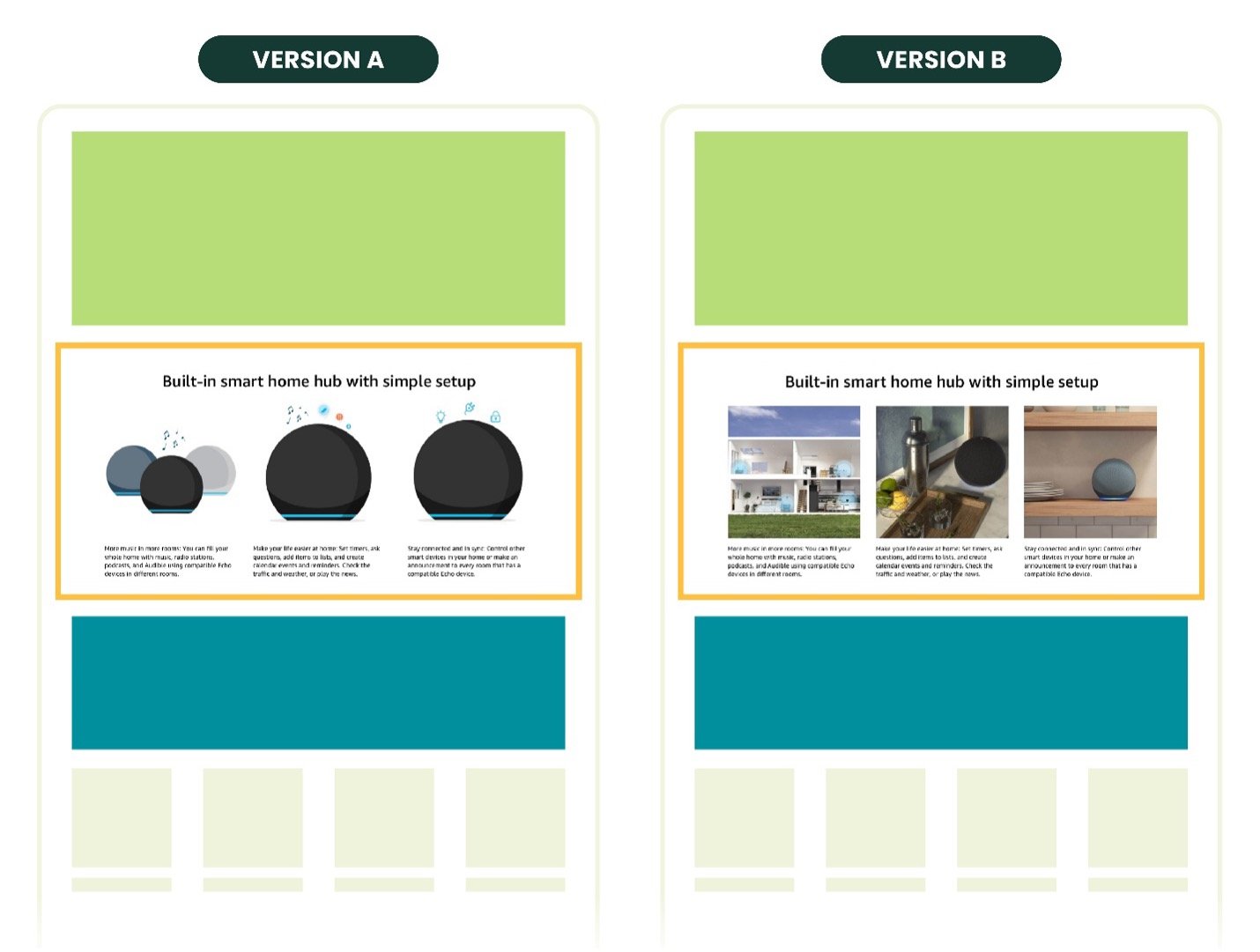The Importance of A/B Testing Content & Creatives on Amazon
Even when you’re having a banner quarter on Amazon, it can feel like a bit of a mystery as to why.
Sure, you maximized every ad dollar, hired the best marketing team you can afford, and ran all those sales and promos... but what was it that your consumers connected with? Why did they buy? Was it you? Was it them? Was it some viral moment on TikTok that affected your sales in a way no amount of science or trend charts will ever explain?
The truth is, once you’ve launched your strategy, there is nothing you can do but wait and see how your consumers respond. But after the dust has settled, A/B testing can be one of the tools you use to understand what’s contributing to buyer behavior and how you can optimize content & creatives for even greater impact.
So, what is A/B testing?
Otherwise known as split testing, A/B testing is an insightful method for fine-tuning strategy. It may also help to think of it in these terms: control vs. variant, champion vs. challenger, and original vs. test. You get the idea. The A/B testing Amazon makes available identifies the effectiveness of your new content and creatives against previously published work so you can remove the mystery of what converts and what doesn’t within your advertising and content strategies.
Why is A/B testing so important?
Testing gives you the opportunity to make future choices from a position of strength. With the information you glean from A/B testing, you can exchange best guesses for data-backed decisions on your creative and advertising strategy. Eliminating the guesswork means you’ll have more confidence in your approach and more of what you need to continue building long-term relationships with customers.
Testing helps answer questions like:
Which aspects of our brand’s story help drive engagement?
Do consumers click on more ads with video over photography?
Is lifestyle imagery impacting engagement?
Which image variation drives more sales?
Does educational copy or imagery (or both) help the most with conversion?
What are some A/B testing best practices for Amazon?
Write a hypothesis.
Any test worth its salt begins with a clear, working hypothesis to prove or seek to confirm something specific about the target market.
Pro tip: To collect usable data, focus on proving one hypothesis at a time. It may seem more efficient to test several variables at once, but doing so will make it impossible to attribute the change in performance to any specific component, limiting your ability to use that information in the future.
Identify what components you want to test.
From compelling words to visually attractive designs, creative content gives you many ways to connect with your audience with each connection generating helpful data on Amazon. You can test a significant number of those creative elements for impact when you compare different versions.
Here are some examples of what you might test on product detail pages:
Here are some examples of what you might test with creative advertising:
Identify the best times for you to test on Amazon.
While it’s never a bad idea to explore an opportunity, you’ll want to identify the best time for you to invest in A/B testing. Here are some things to consider:
A/B testing is best in a proactive environment, where you have the freedom to explore opportunities. The data and insights you get in each test will increase both the impact of your current campaigns as well as the efficiency of your future campaigns when you’re responding to various headwinds.
Ensure you have enough inventory when you test so that your test isn’t hijacked by things outside of your control.
If your industry or category is gearing up for a tentpole event, you can add A/B testing into your preparations. Gaining those valuable insights before the influx of traffic will help you make the most out of the spike in consumer interest.
If you’re exploring variations of your messaging or branding, you can use A/B testing to understand which options have a greater impact with your current audiences.
NOTE: Just because one piece of content was successful last year, that doesn’t mean it will be the winner again this year! Don’t be afraid to revisit it so that you’re always staying on top of what consumers are looking for.
If you’re exploring new audience segments—maybe broad-aisle or near-aisle—use A/B testing to see if those audiences need additional education about your products or more of the story behind your brand.
One of the most important indicators of the best time to A/B test is if you have the runway to do it well. Once your A/B test is submitted, it takes 10 days before Amazon begins collecting data. After that, it will display data weekly, running for a maximum of 10 weeks. We recommend you run your tests for a minimum of 4-5 weeks.
Want to get the biggest impact out of your A/B test? Use a holistic perspective.
A/B testing is one small aspect of the much larger, and much more complex Amazon ecosystem. Building true success on Amazon requires a holistic perspective that understands the interconnectivity of it all, from your creative, to your retail, operations, advertising, data and insights.
If you don’t have the capacity to dive into sophisticated A/B testing with a broader holistic perspective, then you need an agency that brings those things to the table. Not only will we be thrilled to introduce you to our creative department, GO Studio, but we’ll be excited to share a vision for how full-service support can set you up for long-term success.



